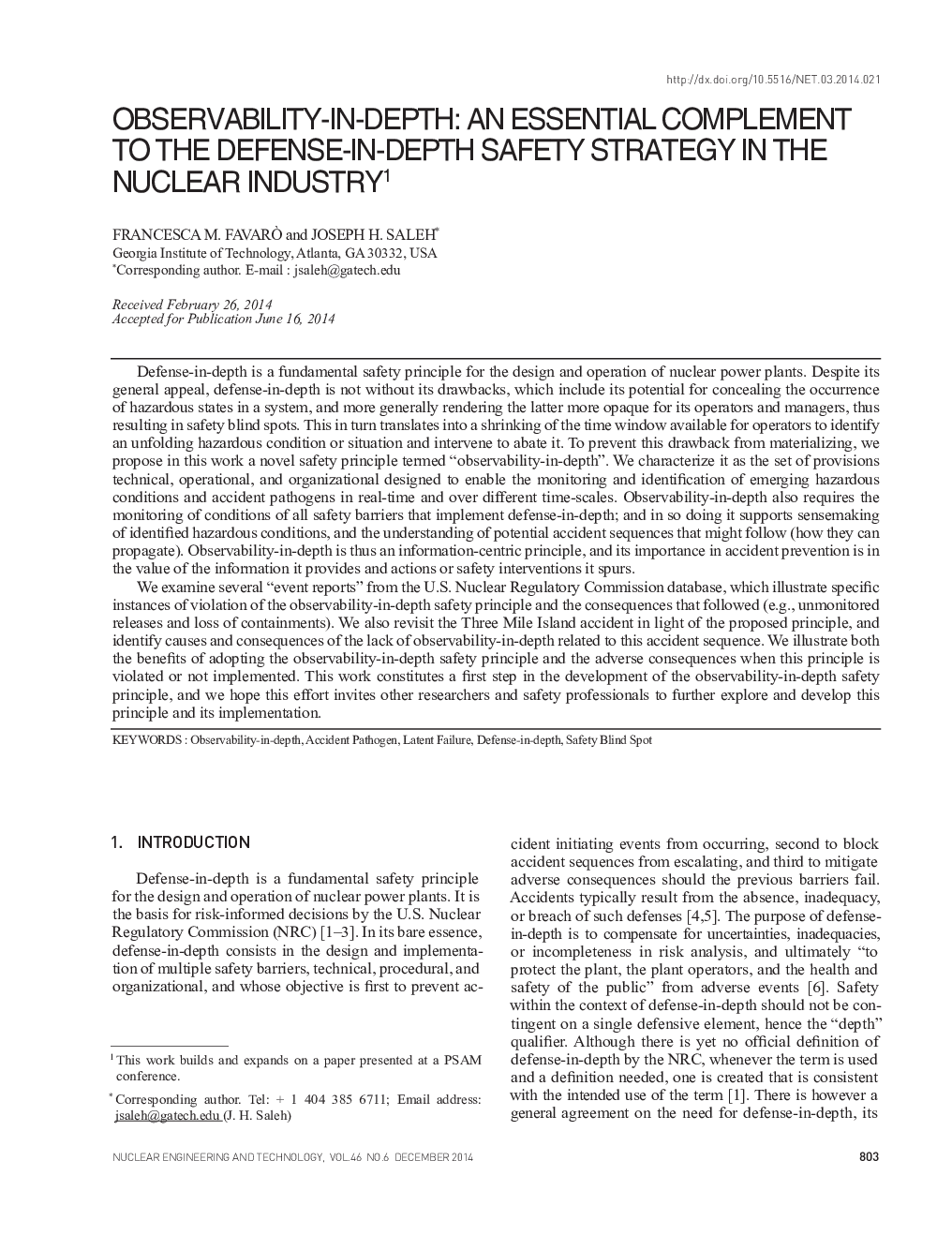| کد مقاله | کد نشریه | سال انتشار | مقاله انگلیسی | نسخه تمام متن |
|---|---|---|---|---|
| 1739932 | 1017314 | 2014 | 14 صفحه PDF | دانلود رایگان |
Defense-in-depth is a fundamental safety principle for the design and operation of nuclear power plants. Despite its general appeal, defense-in-depth is not without its drawbacks, which include its potential for concealing the occurrence of hazardous states in a system, and more generally rendering the latter more opaque for its operators and managers, thus resulting in safety blind spots. This in turn translates into a shrinking of the time window available for operators to identify an unfolding hazardous condition or situation and intervene to abate it. To prevent this drawback from materializing, we propose in this work a novel safety principle termed “observability-in-depth”. We characterize it as the set of provisions technical, operational, and organizational designed to enable the monitoring and identification of emerging hazardous conditions and accident pathogens in real-time and over different time-scales. Observability-in-depth also requires the monitoring of conditions of all safety barriers that implement defense-in-depth; and in so doing it supports sensemaking of identified hazardous conditions, and the understanding of potential accident sequences that might follow (how they can propagate). Observability-in-depth is thus an information-centric principle, and its importance in accident prevention is in the value of the information it provides and actions or safety interventions it spurs.We examine several “event reports” from the U.S. Nuclear Regulatory Commission database, which illustrate specific instances of violation of the observability-in-depth safety principle and the consequences that followed (e.g., unmonitored releases and loss of containments). We also revisit the Three Mile Island accident in light of the proposed principle, and identify causes and consequences of the lack of observability-in-depth related to this accident sequence. We illustrate both the benefits of adopting the observability-in-depth safety principle and the adverse consequences when this principle is violated or not implemented. This work constitutes a first step in the development of the observability-in-depth safety principle, and we hope this effort invites other researchers and safety professionals to further explore and develop this principle and its implementation.
Journal: Nuclear Engineering and Technology - Volume 46, Issue 6, December 2014, Pages 803–816
